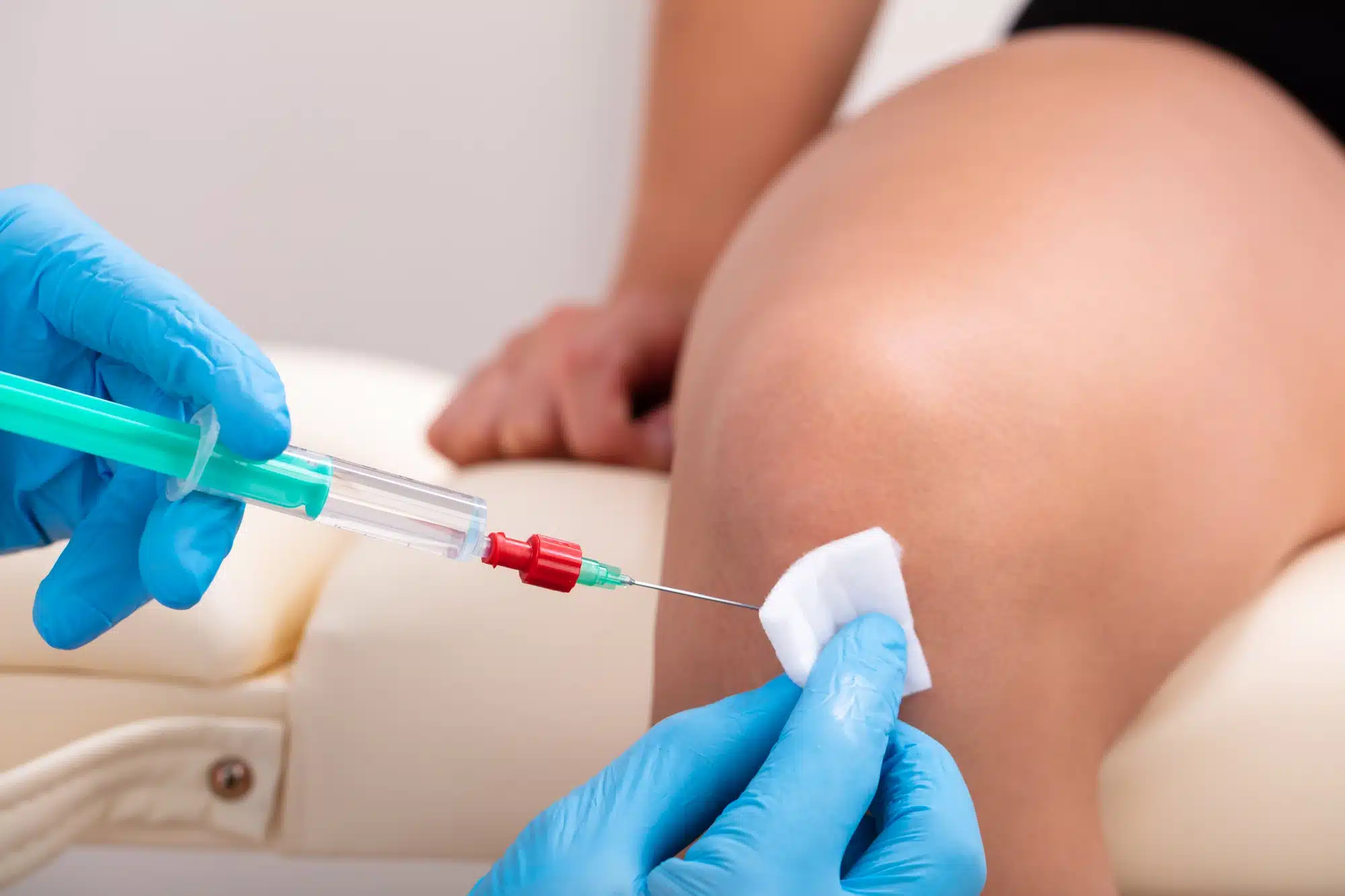
What are the similarities between Synvisc and Hyalgan?
These two brands of intra-articular implants are similar in the following aspects:
- The Origin of hyaluronic acid: Both of these intra-articular implants are available as brand-name drugs and are formulated from a naturally-occurring molecule known as hyaluronic acid. The hyaluronic acid molecules in the products from both of these brands are extracted from rooster combs, the fleshy crest that is located on top of rooster heads.
- Mechanism of action: These implants are safe and effective, as they are designed to mimic the biological properties and functions of the synovial fluid. Following administration into the affected joints, they lubricate the joints, reduce pain and discomfort, and promote better mobility.
- Administration technique: These viscosupplements are meant to be injected directly into the articular cavity between the bones via a process known as intraarticular injection. This injection must be done by a certified specialist after the proposed injection area has been thoroughly inspected, cleaned, and sanitized.
- Types of contraindicated patients: Despite their superior safety profile, both Synvisc and Hyalgan are contraindicated in patients who are allergic to avian protein. Besides that, pediatric patients and those who are pregnant or breastfeeding are contraindicated from receiving either of these treatments. A comprehensive review of patients’ medical histories is crucial to determine their safety and suitability to receive viscosupplement injections.
- Possible side effects: Patients who receive intraarticular implant injections can potentially develop certain side effects, including fluid buildup around the treated joints and localized inflammatory reactions, such as swelling and pain. However, the incidence of allergic reactions stemming from the administration of these two brands is quite rare.
What are the differences between Synvisc and Hyalgan?
Despite their close similarities, Synvisc and Hyalgan differences include the following:
- Active ingredient: Synvisc contains 8mg/ml of hylan as the active ingredient, while the active component in Hyalgan is 10mg/ml of highly viscous sodium hyaluronate. Both of these components are derived from rooster combs but are subjected to different manufacturing processes. Though Hyalgan has a higher concentration of native hyaluronic acid, the hyaluronic acid molecules in Synvisc are cross-linked to be more viscous and, as a result, last longer with fewer injections.
- Formulation of orthopedic implant: Even though they are both made of avian-based hyaluronic acid molecules, Synvisc has been chemically modified to have a higher molecular weight, while Hyalgan is not. The average molecular weight for Synvisc is 6 million daltons, while Hyalgan only has an average molecular weight of approximately 0.5 to 0.7 million daltons. Therefore, Synvisc more closely resembles the healthy, young synovial fluid, which has an average molecular weight of 6 million daltons.
- Number of injections: Synvisc is meant to be administered via three weekly injections to provide six months of relief. Hyalgan, on the other hand, can only deliver two months of relief with three injections. Hyalgan must be administered with five weekly injections to achieve the six months duration of Synvisc. This discrepancy in duration is due to the thicker viscosity of Synvisc gel. Patients who dislike injections are better suited to undergo Synvisc treatment because to the fewer number of injections required for adequate symptom relief.
- Versatility: Synvisc can be injected in various synovial joints, such as the knee, hip, shoulder, and ankle, while Hyalgan is intended to be injected only into the knees.
- Cost of treatment: The estimated costs of the complete treatment course for both Synvisc and Hyalgan are $1073.90 and $1099.80, respectively.
Both help treat Osteoarthritis
Osteoarthritis (OA) is a degenerative disease of the joint. It is characterized by symptoms like pain, stiffness, and discomfort of the synovial joints, including the knees, hips, ankles, and shoulders. This disease happens when the protective articular cartilage encapsulating the bones within the synovial joints wears off. The gradual wear-and-tear of the membrane leads to reduced production of the lubricating synovial fluid and increased friction between the bones, which results in debilitating symptoms. Osteoarthritis is commonly reported by people who are overweight or with a history of joint injuries. The first line therapy to manage OA is usually a combination of pharmacological (e.g. pain relievers, non-steroidal anti-inflammatory drugs) and non-pharmacological (e.g. weight reduction if necessary, physical therapy, rehabilitation gears, etc.) approaches. When this fails to provide adequate relief, physicians may prescribe a viscosupplement to their patients. Viscosupplementation is a second-line therapy that involves cushioning the affected knee joint with injections of a gel-like fluid. The injectable fluid acts as a shock absorber and lubricates the affected synovial joints for smooth movements and less pain. Two brands of orthopedic implant that are available for this type of therapy are Synvisc and Hyalgan.
Related Articles
Joanna Carr
Jalupro: Frequently Asked Questions and Answers
Get answers to common questions about Jalupro. Explore FAQs on this innovative treatment at Doctor Medica.
Joanna Carr
Hymovis Reviews – OA Treatment Examined
Hymovis is a hyaluronic acid-based injection used to treat knee osteoarthritis, providing lubrication and cushioning to reduce pain and improve mobili...
Joanna Carr
Durolane Side Effects – A Complete List
Learn about Durolane side effects, including common reactions like swelling and pain, and important safety considerations for osteoarthritis knee pain...


